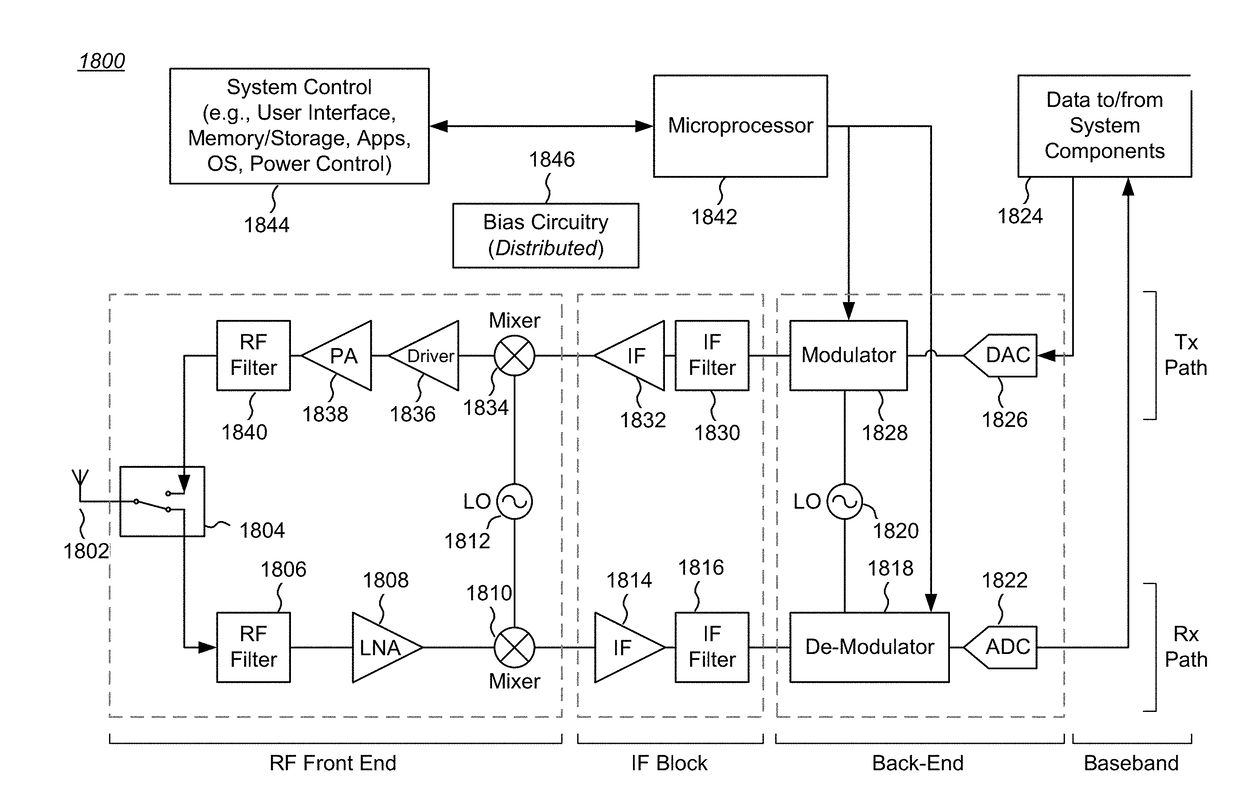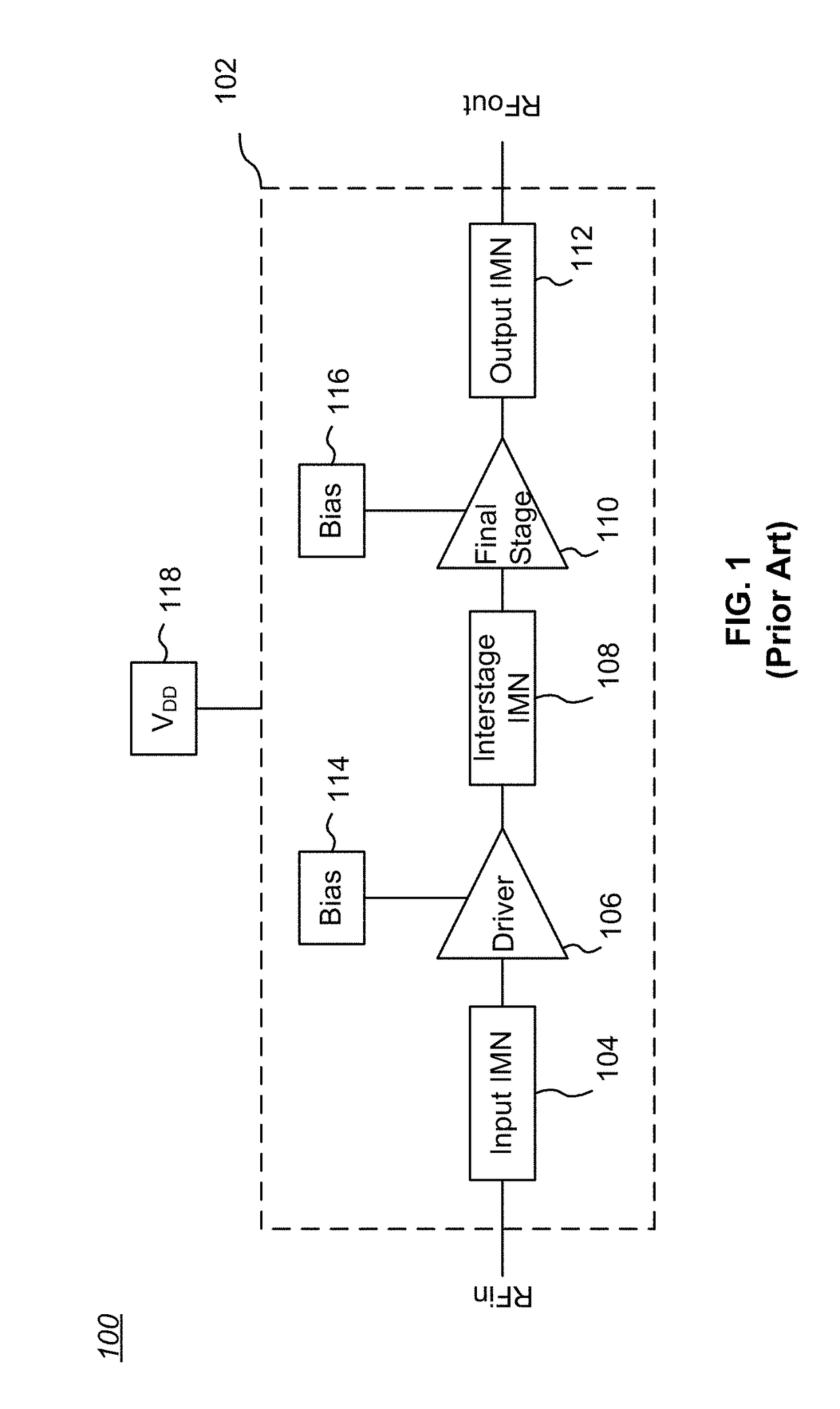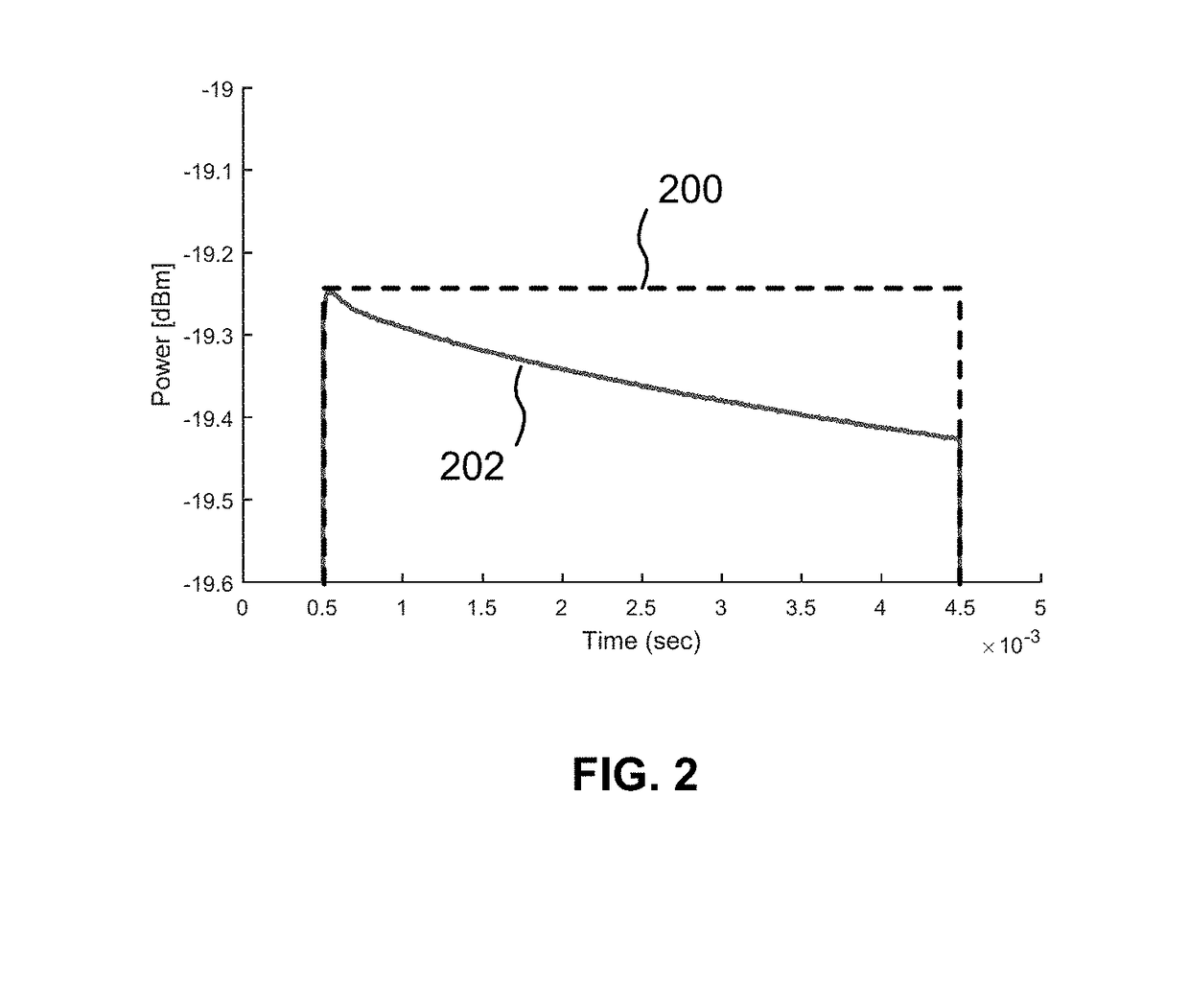Current Mirror Bias Compensation Circuit
a current mirror and bias compensation technology, applied in the field of electronic circuitry, can solve the problems of poor linearity performance, inability to meet the corresponding error vector magnitude (evm) specifications,
- Summary
- Abstract
- Description
- Claims
- Application Information
AI Technical Summary
Benefits of technology
Problems solved by technology
Method used
Image
Examples
example digital
[0081 Sample and Hold Circuit
[0082]FIG. 7 is a block diagram of one embodiment of a partially digital S&H circuit 700. The output Vt of one or more temperature sensors 702 is coupled to the input of a counter-DAC-based circuit 704, optionally through an amplifier or buffer 706. More specifically, the temperature sensors 702 are coupled to the plus-input of a summing circuit 708 in this example. The output of the summing circuit 708 is coupled to an optional mapping circuit or may be used directly as a GC signal.
[0083]The output of the summing circuit 708 is also coupled to opposite polarity inputs of two comparators 710a, 710b. The other inputs of the comparators 710a, 710b are coupled to a associated reference voltages +Vref and −Vref. In the illustrated example, a positive reference voltage +Vref (e.g., +0.5LSB) is applied to the negative input of comparator 710a, and a negative reference voltage −Vref (e.g., −0.5LSB) is applied to the positive input of 710b. The outputs of the co...
first embodiment
[0099]FIG. 9 is an indirect temperature measurement Gain control signal generation circuit 900. The circuit 900 includes a conventional PA 902 having a Gain control adjustment (e.g., an adjustable bias circuit). Also included is a scaled replica amplifier 904 that, in known fashion, mimics the characteristics and performance behavior of the PA 902, but at a smaller scale (e.g., ⅛ size). The replica amplifier 904 would be fabricated in close proximity to the PA 902 so as to be affected by the self-heating of the PA 902 during pulsed operation. The nominal Gain for the replica amplifier 904 generally would be the same as the nominal Gain for the PA 902 to maximize correlation, but may be set to some other value, such as unity, to simply measurement.
[0100]In the illustrated example, a Reference Signal is applied to the input of the replica amplifier 904 and to a first input of a conventional measurement circuit 906, which may, for example, measure a desired parameter, such as Gain, pow...
second embodiment
[0105]FIG. 10 is an indirect temperature measurement Gain control signal generation circuit 1000. In this embodiment, instead of using an AC signal as reference signal as shown in FIG. 9, plus and minus DC voltages (e.g., 0.5V+10 mV=0.51V, and 0.5V-10 mV=0.49V) may be applied to a pair of scaled replica amplifiers 1002a, 1002b located in close proximity to a PA 902. The output of the replica amplifiers 1002a, 1002b may be applied to a first differential amplifier 1004.
[0106]The output of the first differential amplifier 1004 represents the Gains of the replica amplifiers 1002a, 1002b, which are assumed to be equal and also equal to the Gain of the PA 902. The output signal represents Gain because the DC input signals are assumed to be known and accurate. As an example, if +DC=1V+0.1V, and −DC=1V-0.1V, then the difference between the input voltages is equal to (1+0.1)—(1−0.1)=0.2V. If the Gain of the replica amplifiers 1002a, 1002b is 10, then the difference of the outputs of the rep...
PUM
 Login to View More
Login to View More Abstract
Description
Claims
Application Information
 Login to View More
Login to View More - R&D
- Intellectual Property
- Life Sciences
- Materials
- Tech Scout
- Unparalleled Data Quality
- Higher Quality Content
- 60% Fewer Hallucinations
Browse by: Latest US Patents, China's latest patents, Technical Efficacy Thesaurus, Application Domain, Technology Topic, Popular Technical Reports.
© 2025 PatSnap. All rights reserved.Legal|Privacy policy|Modern Slavery Act Transparency Statement|Sitemap|About US| Contact US: help@patsnap.com



